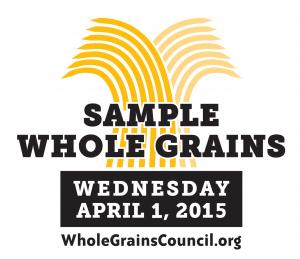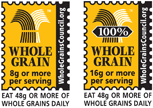Share This
Approximately 20,000 new food products are introduced in the US each year, each vying for a prized place in grocery carts across the country. While shoppers may have widely different tastes, lifestyles, and eating patterns, there is one component of food that more and more Americans tend to agree on: whole grains.
The 2014 Food and Health Survey found that a whopping 72% of consumers are seeking more whole grains, which is pretty impressive for a nation with such diverse food preferences and health philosophies. These data are in line with the growing movement towards nutritious and minimally processed foods. In fact, a 2014 functional food report found that, “For the first time, added fiber/whole grain, more natural/organic, and real fruit/fruit health benefits, outpaced reduced-fat and fortified nutrient claims.” Additionally, the authors reported that one third of moms are making a strong effort to increase whole grains, calcium, and fresh/unprocessed foods in their child’s diet.
Despite the growing interest and availability of whole grains, Americans are only making a meager 12% of our grains whole. This is up from previous years, but is nowhere near the recommended 50-100% range. Luckily, supermarket dietitians are eager to help.
Many grocers across the US and Canada will be celebrating Whole Grain Sampling Day next Wednesday, April 1, including select locations of Whole Foods Market, Hy-Vee, ShopRite, Martin’s Supermarkets, King Soopers/City Market, C&S Wholesale Grocers, Coborn’s, Niemann Food /County Market, Atlantic Superstore, Weis Markets, and more! From store tours, to recipe demos, to product sampling, to nutrition education, these supermarket teams will be putting on events to help more people choose more whole grains. (See this webpage to find a participating supermarket near you.)
In addition to participating in the annual Whole Grain Sampling Day, supermarkets are testing a variety of techniques to highlight their healthy whole grain options. A recent survey of 29 grocery chains representing over 6,800 stores found that 100% of grocers surveyed offer community health events, healthy recipes, and healthy product samplings. A large majority also employ store dietitians (95%), offer store tours (95%), end-cap displays promoting healthy choices (90%), and cooking and wellness classes (86%). Most of these programs are even offered free of charge.
At our Whole Grains Conference in November, a panel with Big Y’s lead dietitian, Carrie Taylor, and Kwik Trip’s director of product development, Jim Bressi, offered insight on ways that various retailers (from supermarkets to convenience stores) are guiding consumers towards whole grain products. (Grocery trends were also explored at Oldways’ fifth annual Supermarket Dietitian Symposium, which wrapped up just yesterday at The Vinoy Renaissance St. Petersburg Resort and Golf Club in St. Petersburg Florida.)
If you’re with the 72% of Americans shopping for more whole grains, be sure to look for the word “whole” on the ingredients label, or look for our handy packaging symbol, the Whole Grain Stamp. The Stamp is used on products that offer at least a half serving (8g) of whole grains. Additionally, our 100% Stamp is used to indicate products where 100% of the grain ingredients are whole grain. (Kelly)




Add a Comment